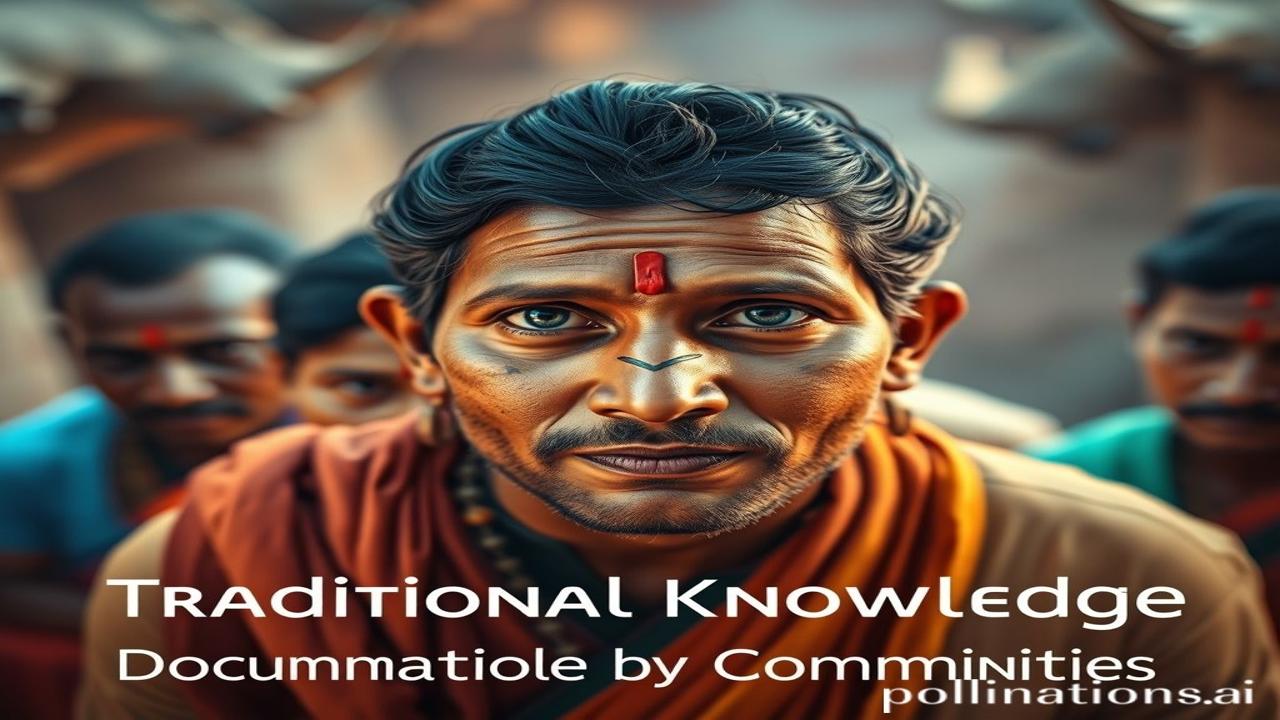Mitti Ki Khushboo, Hawa Mein Gyan: Traditional Knowledge and Our Planet’s Future
Kabhi socha hai, jab shahar ki concrete jungle mein phans jate hain, toh woh mitti ki khushboo kahan chali jaati hai? Woh khushboo jo humare grandparents ke khet mein hoti thi, woh gyan jo unke paas tha, woh aaj modern environmental science mein kitna important hai, yeh jaan kar shayad aap chonk jayenge. Let’s dive in!
Kya Hai Yeh Traditional Knowledge? (What is This?)
Traditional knowledge, yaani paramparagat gyan, koi dictionary definition nahi hai. Yeh toh woh wisdom hai jo generations se transfer hoti aayi hai – stories, songs, rituals, aur practical skills ke through. Think of it as grandma’s nuskhe (recipes), but for everything from farming to healing to living in harmony with nature. Yeh knowledge system evolved over centuries, born from deep observation and experience. Yeh koi किताब nahi hai, yeh jeevan hai!
This knowledge isn’t just some quaint relic of the past. It’s a living, breathing system that’s often hyperlocal, deeply intertwined with the environment, and incredibly resilient.
Jab Yeh Sab Shuru Hua: (When and Where Did It Start?)
Iska origin kisi ek date ya place par pin-point karna impossible hai. Yeh toh tab se hai jab se humare ancestors ne dharti maa ke saath rehna seekha. India, with its diverse ecosystems and ancient civilizations, is a treasure trove of traditional knowledge. From the Ayurvedic practices of the Himalayas to the rainwater harvesting techniques of Rajasthan, from the tribal knowledge of forest management in the Northeast to the marine conservation practices of coastal communities, India has it all.
Kyun Itna Important Hai? (Why is it Important?)
Aaj, jab climate change humare darwaze par khada hai, traditional knowledge is more relevant than ever. This is because:
- Sustainable Practices: It promotes sustainable resource management. People lived with nature, not against it.
- Biodiversity Conservation: It often holds the key to preserving biodiversity and understanding complex ecosystems.
- Climate Resilience: It offers solutions for adapting to climate change and mitigating its impacts.
- Food Security: It contributes to sustainable agriculture and food security.
Gaon Ki Diary: Zameeni Sach – Log Aur Jeevan (The Ground Truth – People and Life)
Imagine a small village nestled in the Aravalli hills of Rajasthan. The year is 1850. The monsoon failed last year, and the wells are drying up. But the villagers aren’t panicking. They know the ways of their ancestors. The elders, particularly the women, remember the ancient kunds (traditional stepwells) built by their forefathers. They organize the community to clean and repair these kunds, and when the next rains arrive, the water is collected and stored, providing a lifeline for the village.
Or picture a tribal community in the dense forests of Odisha. They have lived in harmony with the forest for centuries, knowing which plants to use for medicine, which animals to hunt sustainably, and how to protect the forest from fire. Their entire lifestyle is interwoven with the ecosystem. They see the forest not as a resource to exploit, but as a living entity to be revered.
“Maati hamari mata hai,” the village elder, Shyamu Kaka, would often say. “Iska samman karna hamara dharm hai.”
Aaj Ka Bharat: Dharohar Aur Pehchaan (Cultural Significance Today)
Traditional knowledge is still alive and well in many parts of India. We see it in:
- Ayurveda and Yoga: These ancient systems of healing are gaining global recognition.
- Traditional Agriculture: Many farmers are returning to traditional farming practices, using indigenous seeds and natural fertilizers.
- Crafts and Textiles: Traditional crafts and textiles are not just beautiful, they often reflect a deep understanding of natural materials and sustainable techniques.
- Architecture: Vernacular architecture, adapted to local climates and using locally sourced materials, offers sustainable solutions for modern construction.
- Festivals and Rituals: Many festivals and rituals celebrate nature and the environment, reinforcing the importance of living in harmony with the earth.
Yeh sab milkar ‘Bharatiyata’ ko aur mazboot karte hain – ek pehchaan jo hume apni jaddon se jodti hai.
Mazedaar Tathya Ya Bhram-Bhanjak (Fun Fact or Myth-Buster)
Myth: Traditional knowledge is outdated and unscientific.
Truth: While it may not always adhere to Western scientific paradigms, traditional knowledge is often based on centuries of observation and experimentation. Modern science is increasingly recognizing the value of this knowledge, finding scientific explanations for practices that were previously dismissed as folklore.
For example, traditional farmers in many parts of India practice crop rotation and intercropping. Scientists now understand that these practices improve soil health, reduce pest infestations, and increase crop yields.
Drishya Aur Bhavnayen (Visual & Sensory Layer)
Imagine the scent of sandalwood and burning incense wafting through the air as you walk through a bustling market in Varanasi. The sounds of chants echo from the ghats along the Ganges. Feel the cool, damp stone of an ancient temple beneath your bare feet. Hear the rhythmic beat of drums as a tribal community celebrates a harvest festival. These sensory experiences connect us to the past and remind us of the rich tapestry of traditional knowledge that surrounds us.
Antim Vichar Ya Uddharan (Closing Insight or Quote)
Traditional knowledge is not just about the past; it’s about the future. It offers us a path towards a more sustainable and equitable world, a world where we live in harmony with nature and each other.
As the ancient shloka says:
वसुधैव कुटुम्बकम् (Vasudhaiva Kutumbakam) – The whole world is one family.
Let’s embrace the wisdom of our ancestors and work together to create a future where this ancient truth is realized.
